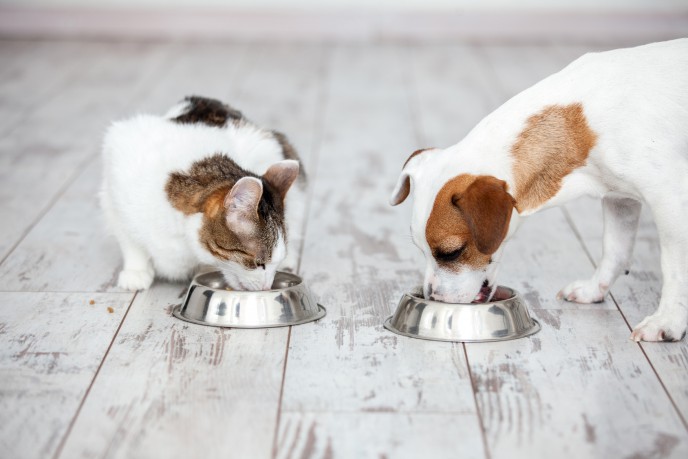
Is your pet a fussy eater? It’s normal, as a pet owner, to be concerned about how much your cat or dog is eating and whether they are getting the right nutrients. It doesn’t help if your pet is a fussy eater.
There are many reasons for which your cat or dog may not be eating properly, and it’s difficult to force them to eat when they don’t want to.
However, there are a number of things you can do to encourage your pet to eat if it’s simply a matter of them being a fussy eater.
Stay with your pet while they eat
Your pet’s reluctance to eat may actually stem from a sense of separation anxiety, and they may not be eating because they feel nervous that you aren’t around. Though standing over your pet while they eat may not be the best idea, staying in the room whilst they eat may help to put them at ease. This can also be a useful way of monitoring how much your pet is eating.
Add water to food
If you feed your pet dry food, they might appear fussy because they find it difficult to eat. Adding a teaspoon or two of water to their food bowl can soften the food, making it easier for your pet to chew. Alternatively, you could try mixing their dry food with some wet food to add moisture.
Reducing the struggle your pet faces whilst eating will encourage them to do so. It they continue to refuse to eat, it’s advisable to get their teeth and gums checked out by your vet.
Clean their bowl
Just as our appetite may be dulled by dirty crockery or cutlery, your pet probably won’t want to eat from a dirty food bowl. Choose bowls made from materials that are easy to clean and don’t hold smells, such as stainless steel, and wash your pet’s bowl as regularly as possible. This will also reduce the likelihood of bacteria developing that could make your pets ill.
Create an ‘eating area’
Your pet may be reluctant to eat because there is too much going on and they are unable to relax. If your pet associates eating with stress, they may be discouraged from doing so. Put their food and drink in a quiet area of the house where there isn’t too much noise. This can be especially useful if you have young children that might interfere with your pet whilst they are eating.
Impose a time limit
Limiting the amount of time your pet has access to food can help encourage them to eat as they realise they don’t have all the time in the world. Allow your pet a 30 minute window and take the food away if they don’t eat it within this time, waiting until your pet’s next meal time to put the food down again. This will not cause your pet any harm as, if they are hungry, they will eat the food when it is available to them.
If your pet’s appetite doesn’t show any signs of improvement after you have tried these tips, your vet may be able to provide you with further advice. Similarly, if you are concerned that your pet’s reluctance to eat is a sign of something more serious than just being a fussy eater you should not hesitate to seek help from your vet.